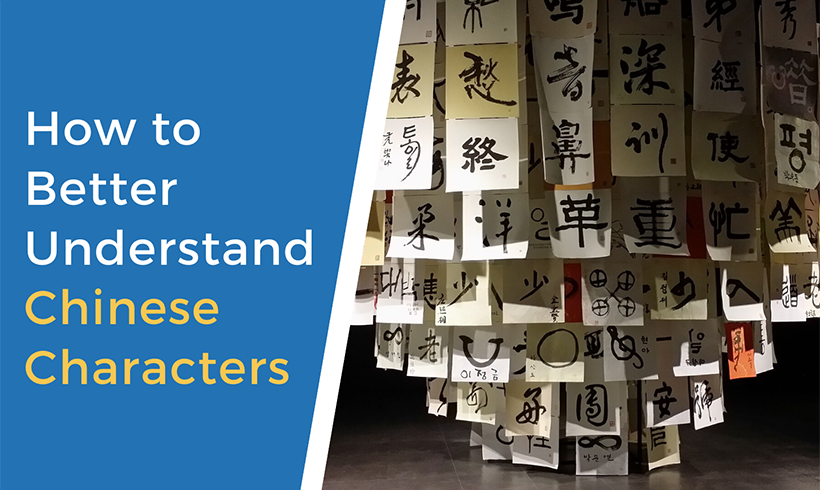How to better understand Chinese Characters? Many foreigners are curious about learning Chinese characters. Partly because they are amazed by the charm of Chinese calligraphy. Let’s talk about learning Chinese characters from a more practical point of view. It’s quite clear that knowing Chinese characters is a prerequisite for passing the HSK (level 3 to level 6). Not to mention understanding Chinese magazines and newspapers.
Some Chinese learners are awe-struck by how complicated they are, especially when a character contains more than 15 strokes. More importantly, sometimes it’s not easy to understand the logic behind a certain character. In terms of how to better understand Chinese characters, we are here to give you some advice. They concern three main aspects of a Chinese character.
Chinese Characters: Shape
In ancient China, instead of writing characters, Chinese people “drew characters”. Even now some Chinese learners still prefer to use this phrase. And it suggests that there is a connection between ancient Chinese characters and pictogram.
The modern Chinese characters are the result of an eight-thousand-year evolution. It starts from the moment when people started to depict objects in a pictorial way. Therefore, associating Chinese characters with pictures or scenery which they resemble could stimulate your interest in learning Chinese characters.
In fact, there are quite a few characters that would remind you of something similar in terms of appearance or shape. For example, the character “山(shān): mountain” looks pretty similar to undulating hills. The verb “飞(fēi): to fly” can serve as another decent example. The two little stokes on the right combined with the overall shape of this character resemble a bird flapping its wings.
Chinese Characters: Sound
Many Chinese characters consist of two parts. It’s the radical (which will be explained afterward) and a separate character indicating the pronunciation.
In these cases, the sound-indicating character can often be treated as the “root” of the character. For example, “马(mǎ): horse” could be considered to be the “root” of several relative characters. For example: “妈(mā): mother”, “码(mǎ): code” and “骂(mà): to scold”.
As you might have noticed, “马(mǎ)” only determines the pronunciation of these characters. It’s got nothing to do with their meaning. This is something typical that you will come across when learning Chinese characters.
Another example can be “洋(yáng): ocean”, which is made of the radical (the left part) “water”. The independent character “羊(yáng): sheep” indicates its pronunciation. Hence, even if sometimes you don’t know the meaning of a Chinese character, you might still be able to read it correctly.
Chinese Characters: Meaning
Radicals play an extremely important role in forming Chinese characters. They give a hint about the meaning of a certain character. Verbs that are more or less related to each other usually share the same radical. This would help you better understand and memorize Chinese characters to a certain extent.
Sometimes the radical of a character can also be represented by a separate character. For instance, “口(kǒu): mouth” is the common radical. You can find it in: “吃(chī): to eat”, “喝(hē): to drink”, “咬(yǎo): to bite” and “嚼(jiáo): to chew”.
However, the radical of a character does not always occupy its left part. It could be also at the bottom. For example, the radical of “热(rè): hot” turns out to be the four dots at the bottom. They have a hidden meaning of fire.









0 Comments